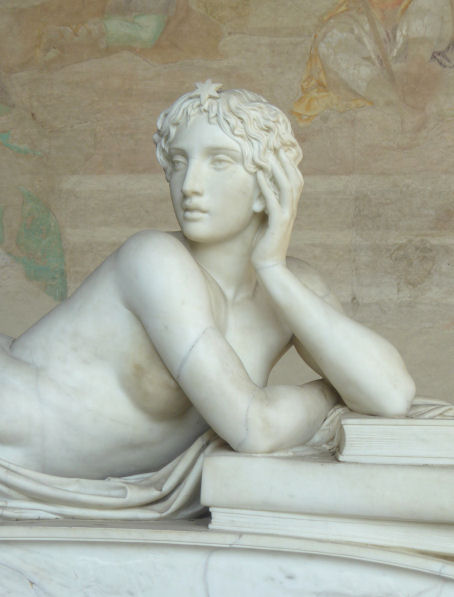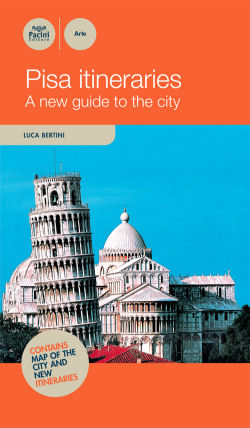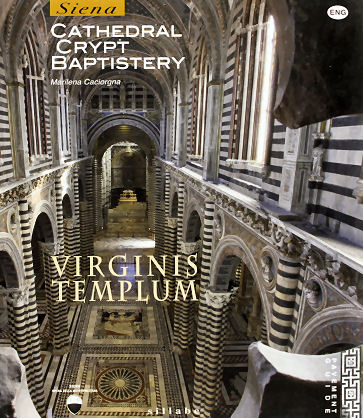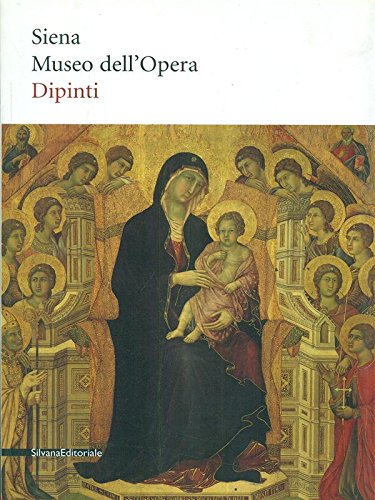Siena
& Pisa
September
2016
More photos
of Siena
here
and
Pisa
here
|
Monday
5th September Why Siena and Pisa? Well Siena I haven't been to since the early 1990s, and then only for a day, and there's been so much art, learning, reading and travelling since then I feel ashamed not to have yet done the place justice, what with all its early renaissance wonderfulness. Doing justice to Pisa is long overdue for very similar reasons, as I've never seen more than the airport and the railway station. I'm also planning on making them my next two bonus pages to add to The Churches of Florence. The morning was reassuringly cold, dark and damp as I travelled to Gatwick to catch the 12.25 to Pisa. easyJet's bag drop machines did a bit of crashing, but that little delay was overshadowed by my flight being reported delayed by half an hour. A very busy terminal too, making a queue for coffee and croissant seem a bit too much trouble. The queue for a Pret brie and tomato baguette and mango smoothie for the flight was acceptable though. The delay was blamed on a passenger on the previous flight to Valencia having to be taken off by police, and was a full hour and a half by the time we took off, so I didn't start on my in-flight baguette until well after 2.00. At Pisa Airport buying a ticket for Siena gets you a train ticket from Pisa Centrale station and a ticket for the good old replacement bus to the station. The train to Empoli was waiting for me on the platform, but the 17.40 to Siena was just leaving Empoli as I got there, so I had to wait for the 18.08. The train to Siena stops everywhere, but when one of the stops is Poggibonsi and one learns that it's pronounced podgy-boncy, one doesn't mind at all. Arriving at Siena in the rain and seeing the crowd waiting for taxis, with no cabs in evidence, I decided to walk. Will I never learn? Still, as I type this in my sweet and quiet room in the Palazzo Ravizza hotel, which overlooks the garden, with a sweeping vista beyond, with various items of clothing and cartography drying out, all that damp trudging is happily forgotten. Tuesday 6th September I awoke to the somewhat stunning view from my window (see right). A minimal but fresh breakfast was had on the garden terrace overlooking said view. The 'fresh' juice is a bit watery, coffee fine, muesli selection OK, croissants fresh, but nothing else in the pastry line. To the Duomo at 9.30, to discover that the complex doesn't open until 10.30, so I stroll through the Campo to San Cristoforo to begin my church thing, just before a service started. Back at the Duomo a ticket was bought, an Opa Si (€15), which also includes the Baptistry, the crypt and the Opera museum and lasts for three days with one visit to each place. The Duomo is somewhat overwhelming on entry, due to all the stripes and there being decorated surfaces all over. Also the crowds and the roped-off areas guiding your route around the pavement panels. Further disappointment on my visit at the scaffolding completely covering the Pisano pulpit. Most of the paintings over the altars can be safely skipped. So it fell to the pale sculpted Altare Piccolomini, the fourth altar on the left, to emerge as the standout. Commissioned in 1491 by Cardinal Francesco Piccolomini from Lombard sculptor Andrea Bregno, the statues of Saints Gregory and Paul in the two main niches to the right and Saints Pius and Peter in the niches to left are by Michelangelo, who also started the Saint Francis in the upper left niche, finished by Pietro Torrigiani. (Torrigiani it was, according to Vasari, who busted Michelangelo's nose during a fight in the Brancacci chapel, was banished from Florence, and ended up in England, working for Henrys VII and VIII, among others.) Michelangelo's work dates to 1501/3 and was halted prematurely by his returning to Florence to carve the David. The sculpted Madonna in the central upper niche is by Jacopo della Quercia. As cake-icing there's a sweet gold-framed Madonna and Child painting in the centre by Paolo di Giovanni Fei, one of this trip's top new names. Pinturicchio's frescoes over the carving-embellished entrance to the Libreria Piccolomini immediately to the right, and those on the ceiling and walls in the Library itself, are vivid and restored-looking highlights too, said to be the artist's masterpiece, with cases containing open choir books below. I next explored the Baptistery and the Crypt. The last being a delightfully ramshackle and random trio of spaces which was maybe part of an entrance for pilgrims, but when the baptistery was built this under-church was filled with rubble. Containing late-13th-century frescoes - very damaged but vivid - it was found and excavated from 1999 to 2003, but as the rubble was by then holding up the church above a steel structure had to be built to support the marble stairs above. So I'd visited all but the
Opera museum
before lunch became necessary. Two cheese and tomato rolls were taken back
to eat at the hotel, when I had a thought - the garden terrace. Lovely. A
gentle rustling in the bush behind me I took to be a bird, but it turned
out to be a passing tortoise. A slice of panforte Nero had been bought too, as I'd
been assured it was spicier. The word canella was mentioned, but the
strongest flavour for me was chocolate. |
|
|
|
|
||
|
Saturday 10th September  Today to Pisa. The walk from the station to my hotel in Siena Monday evening in the rain is not an experience I'd ever like to repeat. So this morning I decided to lay it's ghost, as it were, by walking to the station. This foolishness is explained by the fact that yesterday I'd ended my morning by the city gate very near the marathon escalator sequence down to the station, and I'd got back to my hotel in no time, as I now know Siena better. And so the trek was shortish, only lightly sweaty, and I found Sant'Andrea, a 'new' church open! The 10.41 Empoli train had just left when I got to the station, so an hour wait loomed, but then I noticed that the 11.18 Florence train stopped at Empoli too. When I got there I waited mere minutes for the connecting train, which was another stopping train, so it was just before 2.00 when I checked into my Pisa hotel, the Grand Hotel Duomo. Having stipulated a quiet room I got one looking out at a wall, rather than the street and the Duomo, but you can't always expect the spectacular, as my old granny used to say. First impressions of Pisa: more varied in the architecture, after Siena's all-brick alley uniformity, so more variety of palazzo design and colour, and much hotter, considering I've not come very far. After a post-travel rest I had to go and check out the Duomo and that flipping tower of course. So many tourists! And so few resisting the holding-the-tower-up photo cliché. A walk towards the centre took me near Santa Caterina and it's façade drew me in. Wow - what a big bare barn. There's a Roman sarcophagus under the altar table, a tomb and statues of The Annunciation by Nino Pisano, a Fra Bartolomeo Madonna and Child with Saints and a striking and strange Apotheosis of St Thomas Aquinas by Francesco Triani. Not much light to see the art though. (At this stage I was starting to realise that my finding churches dark this week may have had a little to do with my new glasses with the UV-reacting darkening coating. Duh!) In search of a guidebook and food I crossed the Arno and in a loggia found ... a CD & record fair! Retro or what? Along the river are some reassuringly handsome palazzi. A heart-warming number of marble-facade churches were encountered too. And did you know that McDonald's now do a tasty veggie burger? Back near my hotel I got a (mediocre apple and vanilla) gelato and wandering while I ate it I found the very pretty Piazza dei Cavalieri and a small bookshop in Piazza Buonamici that, when I asked the nice man, had the good guidebook to Pisa that three bigger shops I'd tried earlier had not - Pisa Itineraries by Luca Bertini. The translation is not always spot on, but the knowledge and enthusiasm are evident. Sunday 11th September The Museo Nazionale di San Matteo (this city's repository of old altarpieces and such) opens from 8:30am–1. 30pm today, and is closed tomorrow, so it needs visiting this morning. But first breakfast. Indoors for the first time in days, and in a huge room where there were many empty eight-place tables to choose from. The juice machine was cunningly positioned so I had to ask, and the coffee machine took two of us neophytes to get spurting. More cakish options here - two slicy sponges and a tray of petit fours - but no muesli! Lots of jam choice, but unappetisingly dark charred-looking croissants. Reading my new guidebook last night confirmed my suspicion that Pisa has more than its share of appealing Romanesque (Pisan-Romanesque even) marble facades. Ceramic dish decoration on the outsides was mentioned too. I've encountered these before, but not investigated. And the San Matteo museum has lots, I read. I was almost the only person visiting, of course. The painted stuff is on the first floor. Some painted Crucifixes start us off, and lead to Room 5 with a nice enough Simone Martini, taken from Santa Caterina, the church I visited yesterday, but four works by Francesco di Triano, a new name, impressed even more. Similarly in Room 7 Cecco di Pietro made a shining impression. Then the Renaissance happens: Massacio (out in the corridor as you enter Room 9), Benozzo Gozzoli, Ghirlandaio ... and fuller captions, in Italian and English. Back downstairs, around the cloister, are doors to the monumental sculpture room and the ceramic dishes, but this last one was closed. Less works here than in the Siena Pinacoteca, but better displayed and in more varied and attractive bricky spaces. Still no catalogue or shop, but you do get a leaflet of 18 highlights. I then crossed the Arno to find churches, not disturb services and wander quiet and hot Sunday backstreets. I ended up by the promising big San Paolo a Ripa d'Arno, disappointingly totally covered in scaffolding, and then over the river to the striking Cittadella Vecchia, part of Pisa's old arsenale complex, now a bleak zone of dilapidation and rubbish. Pisa doesn't seem to do panini (or panforte) as profusely as Siena, and so in my need for air-conditioned rest I grabbed a bag of ginger flavoured crisps and a bottle of San Benedetto from a local supermarket and made for my room. The evening stroll saw me finding where to get my Duomo complex ticket tomorrow, ticking off some more church exteriors, eating a lovely gelato of stracciapera (pear with choc bits) and plum flavours, from a place called Rufus, in the big Piazza Martiri della Liberta and getting a good takeaway falafel panino and eating it in a smaller piazza. Monday 12th September This morning's odd breakfast lack, as I'd gone for the fresh pineapple because of the sad lack of muesli, was yoghurt. Madness! My last full day so...the Duomo. The Duomo, Baptistery, Camposanto, and Sinopie Museum are all included in the Opa Pisa Pass for €8.00. (The Duomo is free but getting the pass means you don’t have to get a timed ticket.) I was somewhat gutted to learn that the Opera del Duomo museum was closed for restoration, and has been since 2014. The Duomo itself doesn't open until 11.00 so I thought I'd build up to it. The Baptistery sure is big (see right) the biggest in Italy we're told. Quite plain inside, a bit stripy, and the dome disappointingly undecorated. The Pisano pulpit a bit too roped off and hard to get close to. The acoustics are amazing, as demonstrated by an attendant at intervals. Then into the Camposanto. Why didn't anyone tell me how wonderful it is? I knew how wonderful it once was - Ruskin never lies - but all the tales of the allied bombing and the almost totally  destroyed frescos had so lowered my expectations, I
suppose, that I was well primed to be very pleasantly surprised and totally wowed. Also
impressed at how much fresco fineness is to be seen still. (The ones on
the wall as you enter are much the less faded.) And the range of monuments and
Roman sarcophagi, and the space: like a cloister only much more so. A
treat, with one particular monument an instantly fallen-for fave (see detail right).
(I found out later that she's Astronomy, on the tomb of astronomer
Ottaviano Mossotti, by Giovanni Duprè.) But the Triumph of Death
fresco room was closed with the excuse of more
restoration and then reinstallation. The Duomo itself was rammed inside, but not as
crowded as outside, where the annoying hoards sitting on the steps almost blocked
one's entry. The people inside were mostly white-hairs though. The Cimabue apse mosaic
was
being restored behind a wall of sxaffolding and the organ was being tested, but not with tunes, just
annoying repeated tones. The
arcading between the apse and aisles does indeed have a Moorish feel,
which the gilded ceiling spoils. Weaving around the crowds and parties I
got a look at the Pisano pulpit, but beyond the crossing was all blocked
off, and it was noticeable that puzzlingly the platform of ceiling scaffolding
doesn't seem to actually reach the apse mosaic. The Sinopie Museum has a huge display of a large number of unusually big
sinopie. Unfortunately
the display runs around and over the back of ticket office, which makes for a
certain lack of peace and quiet. destroyed frescos had so lowered my expectations, I
suppose, that I was well primed to be very pleasantly surprised and totally wowed. Also
impressed at how much fresco fineness is to be seen still. (The ones on
the wall as you enter are much the less faded.) And the range of monuments and
Roman sarcophagi, and the space: like a cloister only much more so. A
treat, with one particular monument an instantly fallen-for fave (see detail right).
(I found out later that she's Astronomy, on the tomb of astronomer
Ottaviano Mossotti, by Giovanni Duprè.) But the Triumph of Death
fresco room was closed with the excuse of more
restoration and then reinstallation. The Duomo itself was rammed inside, but not as
crowded as outside, where the annoying hoards sitting on the steps almost blocked
one's entry. The people inside were mostly white-hairs though. The Cimabue apse mosaic
was
being restored behind a wall of sxaffolding and the organ was being tested, but not with tunes, just
annoying repeated tones. The
arcading between the apse and aisles does indeed have a Moorish feel,
which the gilded ceiling spoils. Weaving around the crowds and parties I
got a look at the Pisano pulpit, but beyond the crossing was all blocked
off, and it was noticeable that puzzlingly the platform of ceiling scaffolding
doesn't seem to actually reach the apse mosaic. The Sinopie Museum has a huge display of a large number of unusually big
sinopie. Unfortunately
the display runs around and over the back of ticket office, which makes for a
certain lack of peace and quiet.
Some more churches were followed by
a mozzarella and tomato panino eaten, along with a bag of lime
and pepper crisps, in the Piazza Martiri della Liberta. |
|
|
![]()
|
Trip
reading Mary Hoffman City of Stars  I
long ago read (and reviewed) the first and third in Mary H’s Stravaganza
series, they having been set in alternative versions of Venice and
Florence respectively. I loved the first one unreservedly and my only
reservation about the second was due to its being a bit girlier than the
first. This one is set in a version of 16th century Siena called Remora,
with the present-day time-traveller this time a girl called Georgia, who
suffers a bearable stepfather but has an insufferable stepbrother. We
begin in horse-race-mad Remora, where a winged foal is born, whilst in
Islington Georgia saves her money to buy a terracotta figure of winged
horse. Period political shenanigans both shady and romantic ensue, mostly
between the Stravagante (time travellers) and their enemies the di Chimici,
the Medici of this alternative Tuscany. And as things become less black
and white between the factions you're safely hooked. This one's good to
read in Siena, especially if you're becoming interested in the contrade -
the differences in the naming and number of the parishes don't hinder as
the importance and evidence of the divisions are common to the real and
and fictional Sienas, with much murky politicking and corruption in
common. I
long ago read (and reviewed) the first and third in Mary H’s Stravaganza
series, they having been set in alternative versions of Venice and
Florence respectively. I loved the first one unreservedly and my only
reservation about the second was due to its being a bit girlier than the
first. This one is set in a version of 16th century Siena called Remora,
with the present-day time-traveller this time a girl called Georgia, who
suffers a bearable stepfather but has an insufferable stepbrother. We
begin in horse-race-mad Remora, where a winged foal is born, whilst in
Islington Georgia saves her money to buy a terracotta figure of winged
horse. Period political shenanigans both shady and romantic ensue, mostly
between the Stravagante (time travellers) and their enemies the di Chimici,
the Medici of this alternative Tuscany. And as things become less black
and white between the factions you're safely hooked. This one's good to
read in Siena, especially if you're becoming interested in the contrade -
the differences in the naming and number of the parishes don't hinder as
the importance and evidence of the divisions are common to the real and
and fictional Sienas, with much murky politicking and corruption in
common.
|
Guidebooks Luca Bertini Luca Bertini
Pisa Itineraries The translation is not always spot on, but the knowledge and enthusiasm are evident. Arranged around walks - the Duomo complex, west of centre, east of centre and two lungarni (river banks), the walls, the museums. But there's no index, so to find a church, say, you need to find it on the walk's map and track it in the text for the walk. And the arrows on a couple of maps give the wrong direction. But still - the best city guide I found. Blue Guides now do e-chapters from their larger guides. So I got ones that included Siena and Pisa, taken from Alta Macadam's Tuscany guide. They are more useable for guide purposes than previously as you can jump to a different page, for a map maybe, and then flip back at the touch of a button. The maps are separate images too, and you can zoom in easily, by 'squeezing'. All very instinctive, and much easier than lugging a big book, which might well also include very many places that you're not planning on visiting. |
|
|
Catalogue
corner |
||
|
Marilena Caciorgna Siena - Cathedral, Crypt, Baptistery 2013 Not-quite A4 tall, this is a handsome big guide to the Siena Duomo's major elements (so minus the Museo dell'Opera). Lots of exceptionally good photos - views, works, details - some full page. It's coverage is comprehensive and the text very readable. It even has a section about the recently-found 'Crypt', which you won't find much else about in English. |
 |
|
|
Barbara Tavolari Museo dell'Opera di Siena - Paintings 2007 More handbook-sized than the above, my copy of this (bought shrink-wrapped) begins on page 17 in the midst of pages devoted to the stained glass windows attributed to Duccio (which aren't paintings, you'll notice). My copy's first complete entry is number 4, devoted to Duccio's Maesta. There are 52 works dealt with, in chronological order, with full, detailed and informative, catalogue entries and excellent photos for each. The 13th-15th centuries have the highlights, and take up the first 26 entries. The last 26 are from the less fruitful 16th and 17th centuries, plus the preparatory paintings for the triangular mosaics on the Duomo facade from the 19th. These latter century's works all get only one photo and shorter paragraphs. |
 |
|